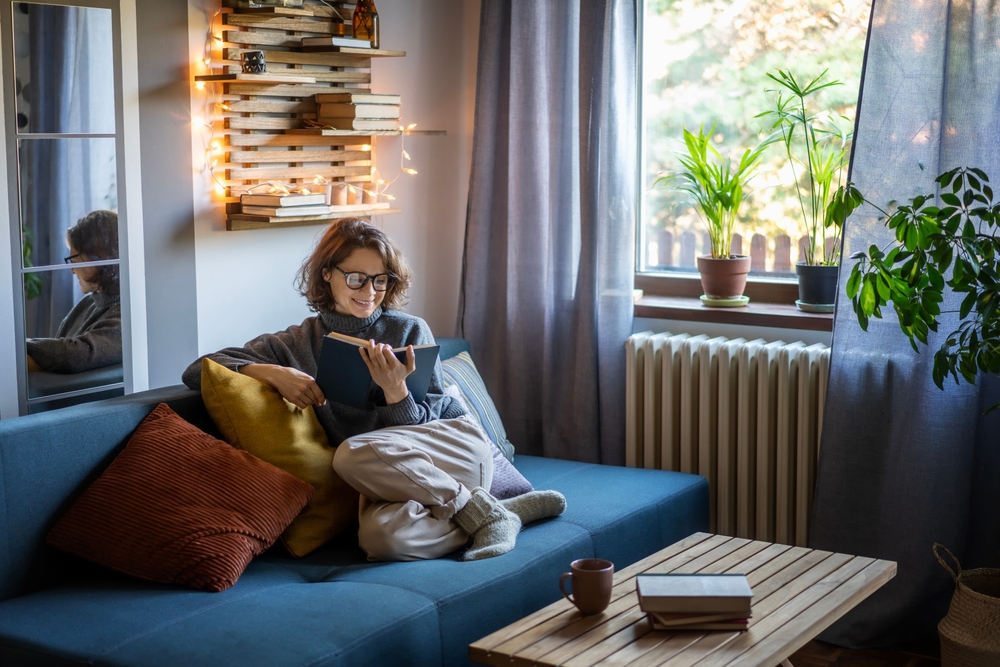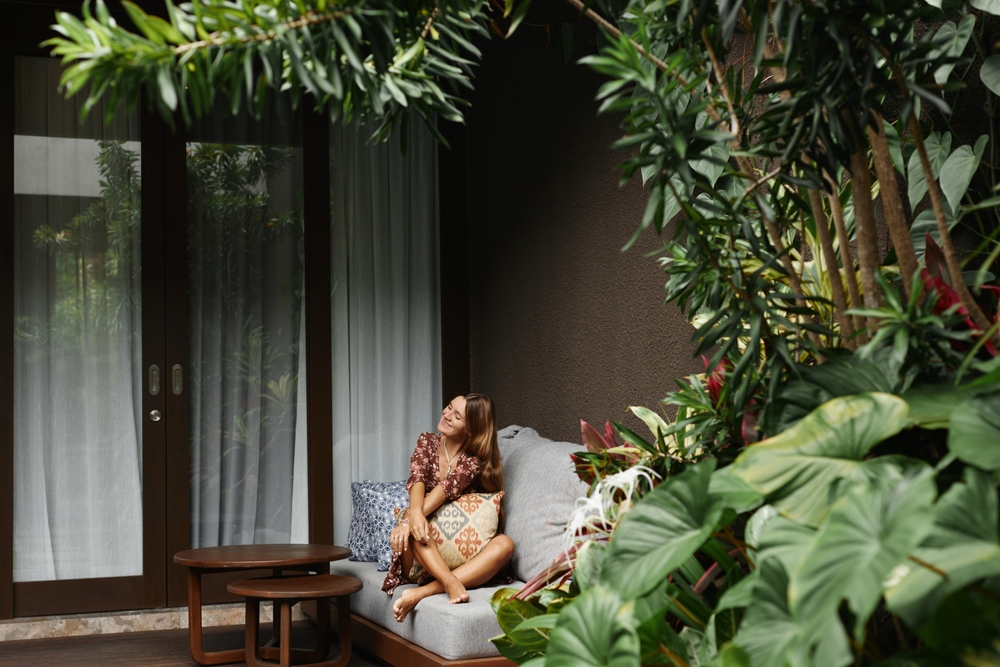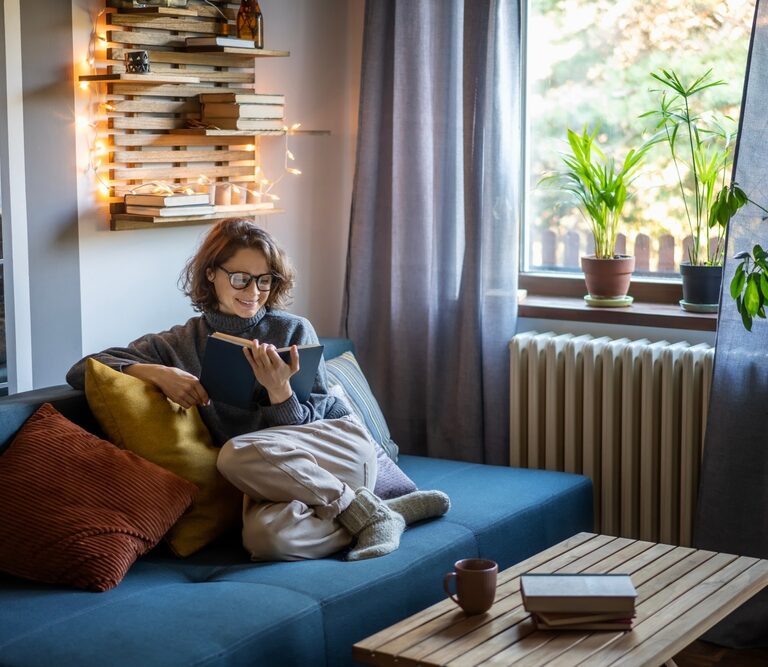Your home should be a sanctuary that you can retreat to after a stressful day. Daily life can be filled with stress because it is non-stop. There are always hectic schedules to deal with and the constant glare of screens that many rely on every single day. It’s hard to slow down, take a breather, and look after yourself by truly unwinding. Your work life and personal life can become a blur of endless responsibilities, and you can easily get caught up in a never-ending whirlwind of tasks. This can then lead to a disorganized, chaotic home that just adds more stress to your day, rather than helping you to relax and take the weight off your shoulders. Experiencing high levels of stress every day, with no place to escape, can seriously impact your mental and physical health.

It is vital to create a home that offers serenity and calm, allowing you to escape your worries and take time for yourself. Having a space that is organized, clean, and tailored to you helps take that weight away and shuts you away from your problems. You can focus on yourself and transforming your headspace, which helps to reduce stress and prevent any mental and physical health issues. Making your perfect relaxing retreat within your home gives comfort and a sanctuary where you can reset, reflect, and recharge. Creating this type of environment doesn’t always require major renovations. With some thoughtful design and a focus on atmosphere, any room can become a restful haven.
Embracing Natural Light
Natural light is a very powerful tool to transform your home into your dream haven. It works wonders on your mood, mental state, and even physical health, helping you to feel restored and less stressed. Sunlight trickling into every room of your home can set the right mood that instantly lifts stress. It can make a room feel brighter, more spacious, and very welcoming, inviting you to spend more time enjoying your home and have vital me time.
But, how do you get more natural light seeping into your home? There are many ways to flood your home with sunlight to create a tranquil atmosphere that helps you de-stress. A great way to bring plenty of natural light into every room is to position your retreat space near large windows that don’t block sunlight. Alternatively, you can use sheer curtains to maximize the natural light that enters the space. If you are fortunate enough to have a room with generous glazing or even have space to create an open extension by choosing from a range of stylish conservatories, you can gain a sense of openness like no other. This can significantly improve the restorative quality of your home’s environment, helping you to refresh your feelings and gain a sense of happiness. Pairing natural light with gentle evening lighting, such as warm-toned lamps or candles, ensures your retreat maintains its soothing feel at any time of day.
Calming Color Palettes
Another easy fix to make your home a sanctuary is to change your color scheme. Decorating your home in a calm palette can create the perfect atmosphere to unwind and feel refreshed. When it comes to color, there is a powerful psychology that has a powerful effect on your mood. If you design a calming space with soft, neutral, or pastel colors, you can create a calming retreat that busts stress. Shades of cream, beige, pale blue, and sage green can all contribute to a sense of serenity. These colors don’t overpower the senses, but instead create a backdrop that allows your mind to unwind. Accents in natural materials such as wood or stone further create a tranquil space, adding depth without disrupting its peaceful atmosphere. By layering textures, perhaps by choosing a woven rug, a linen throw, or a velvet cushion, you can create comfort without clutter.
The Role of Nature Indoors
Bringing nature indoors can also calm you down and make you feel much better, allowing you to truly escape the stress of daily life. Nature in your home can add a beautiful, interesting feature to your home that offers a calming influence to help you unwind. Try to scatter a variety of houseplants in every room to create a refreshing space that you love. Houseplants can improve air quality and introduce a touch of greenery that has been proven to reduce stress. A small indoor water feature, such as a tabletop fountain, can bring the soothing sound of flowing water, evoking the peace of a garden or stream. Even artwork featuring landscapes or botanical prints can have a subtle impact, reinforcing a connection with the outdoors and encouraging mindfulness within the space.
Defining the Purpose of Your Retreat

Every individual has their own way of finding calm, which means a home retreat should be tailored to your personal needs. For some, it may serve as a reading nook, complete with a comfortable chair and a stack of your favorite books. For others, it might be a meditation space, cleared of distractions and filled with cushions for quiet reflection. Creative souls may design their retreat around artistic expression, using the room for painting, writing, or crafting. Whatever its purpose, the retreat should reflect your personality and provide an escape from daily pressures.
Declutter for Peace of Mind
One of the simplest ways to ensure your retreat feels relaxing is to keep it free from clutter. Too many objects, harsh lines, or overwhelming patterns can overstimulate the senses and reduce the calming effect of the space. Thoughtful storage solutions, such as wicker baskets, shelving, or hidden compartments, allow you to maintain order without sacrificing style. A minimalist approach doesn’t mean sterile. Instead, it means ensuring that every piece contributes to the overall sense of balance and calm.
The Lasting Value of a Home Retreat
Designing a relaxing home retreat is an investment in your well-being. It doesn’t just add visual appeal to your home, but it also creates a personal sanctuary where you can step away from stress and reconnect with yourself. Whether you choose a softly lit corner of a bedroom, a converted attic, or a light-filled conservatory, the essence of a retreat is all about how it makes you feel.
